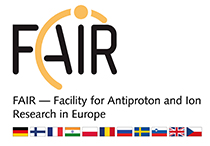Experiments and physics goals at the FRS and Super-FRS

The Super-FRS Experiment Collaboration is one of the NUSTAR sub-collaborations. Many of the present scientific cases are unique in the world and also within NUSTAR. The cases presented here naturally comprise experiments that have common goals with other NUSTAR experiments. However, these experiments use the unique characteristics of Super-FRS, as is described below. The experimental program includes new physics opportunities such as exotic atoms, exotic hypernuclei, delta resonances in exotic nuclei, new exotic radioactivity modes, the importance of tensor forces and high-momentum nucleons in nuclei, and equation-of-state of cold asymmetric nuclear matter. It also includes highly unique and important frontiers of physics such as the search for new isotopes, determination of nuclear radii, and the atomic interaction of highly-charged atoms of heavy elements.
The key of all proposed activities is that they exploit the separator-spectrometer capabilities of the Super-FRS. The ion-optical performance is practically an integral part of the measurement. With this objective the collaboration has proposed experiments, which:
- are intrinsically connected with the separator, such as production and separation of new isotopes.
- are highly unique.
- emerge as new physics opportunities characteristic for this instrument within FAIR.
All these key functions of the Super-FRS can be tailored for the specific goals of each measurement. This opens up a large variety of modes and experimental opportunities, including new measurement concepts. For most of the experiments, the standard detector equipment of the Super-FRS, will be used; some experiments use new and dedicated detector setups.
For more details informations about the Super-FRS project please visit the following Site.
For more details informations about the ongoing experiments at the FRS please visit the following Site.


